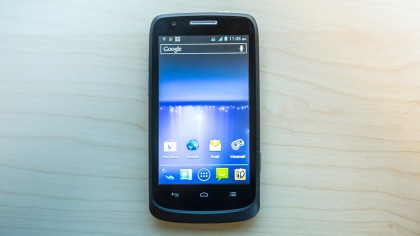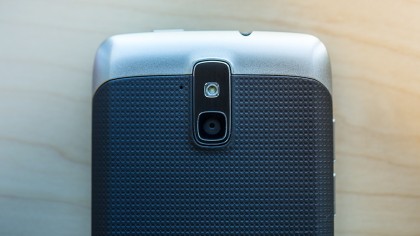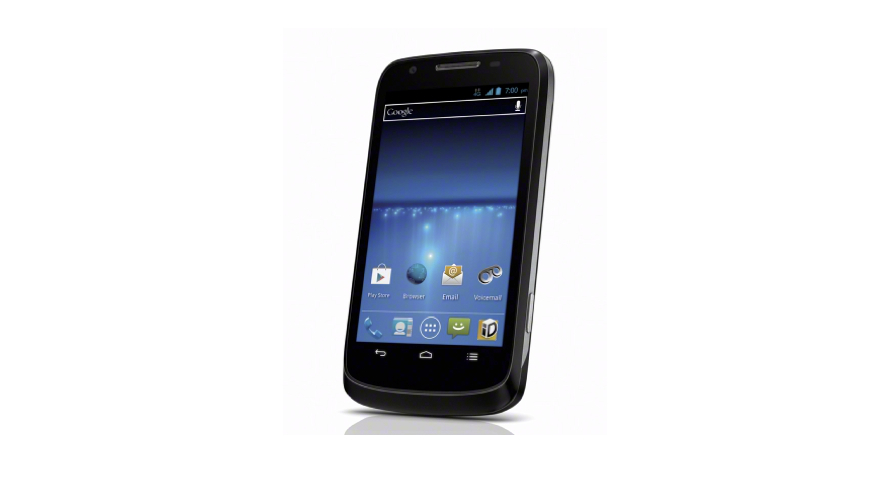TechRadar Verdict
Pros
- +
Affordable
- +
MicroSD and removable battery
- +
4G LTE capable
- +
Sprint Zone account access is good
- +
Minimal bloatware and tweaks to Android
Cons
- -
Camera and Camera button are unreliable
- -
Annoying Voicemail Upgrade prompts
- -
No update to Jelly Bean coming
- -
Laggy OS performance
- -
Sprint's LTE coverage and speeds disappoints
Why you can trust TechRadar
4G LTE network speeds are coming to the masses, and while carriers continue to upgrade their networks and expand the signal, handsets that support LTE are also coming down in price. Coinciding with Sprint's additional LTE rollout in major markets such as Los Angeles, we have the new Sprint Force from ZTE. It's meant to be a low-cost entry level smartphone with LTE access, and while it retails for $299.99, existing Sprint customers can upgrade to it for as low as $49.99 with a new contract, and new customers can bring their own number over and get it for free with a two-year contract.
The phone itself is made out of plastic, with no sharp features or standout metal/aluminum pieces. It has a fair heft to it, so it doesn't feel like you might accidentally fold it in half, but that weight also exposes it's low-cost roots. With its overly rounded corners, and sloping "chin", it almost resembles another phone wedged into a form-fitting phone case.

The Sprint Force is also dated right out of the box, since it's running Android 4.1: Ice Cream Sandwich, with no Jelly Bean update in sight. An older version OS comes with the budget phone territory, but what potential buyers should really be wary of is Sprint's LTE coverage in their area. Sprint is still working on expanding its LTE network, and unless you're tied to the carrier, you'll want to consider other options if fast data is what you crave, and Sprint doesn't have it in your neighborhood.
Design
The phone measures out at 4.88" x 2.54" and is .047" thick, making it slightly larger than an iPhone 5, and it weighs in at 5.4 ounces, an ounce and a half heavier than the Apple device. The face of the phone will also remind you that this is budget-minded as it comes with a 4-inch WVGA 800 x 480 resolution LCD screen. While these are fairly standard amongst lower-end phone offerings, it's starting to slope into the lower-resolution end as more phones get better resolutions.

The biggest problem we had with the screen was the reflectiveness. Even with the brightness turned all the way up, in bright daylight it was almost unusable. Even in normal lighting, you'll see a ton of reflection, especially with darker images.

The left side of the phone has two volume buttons and a microUSB charging port, while the top has a right-placed power button, and a somewhat oddly aligned headphone port. The bottom is empty, save for a thumbnail notch to level the back cover off, and the right side has the only real design annoyance we encountered: a camera button that was basically useless. It is meant to launch the camera software (which is sometimes did), and to act as a shutter button (which it never did) and just ended up being entirely unnecessary.

The back of the phone is textured plastic that is probably meant to serve as traction for holding the device, but it just makes it look a bit cheap. There are two vertical slots near the bottom left for the speaker, and a raised bump near the top for the camera and flash. It would have been nice if those were flush with the back, but that's just nitpicking. Under the back cover you'll find a slot for a microSD card, and a removable 1730 mAh battery. It is worth noting that there is no branding anywhere on the phone, Sprint, ZTE, or otherwise, which makes for a nice, clean design.
